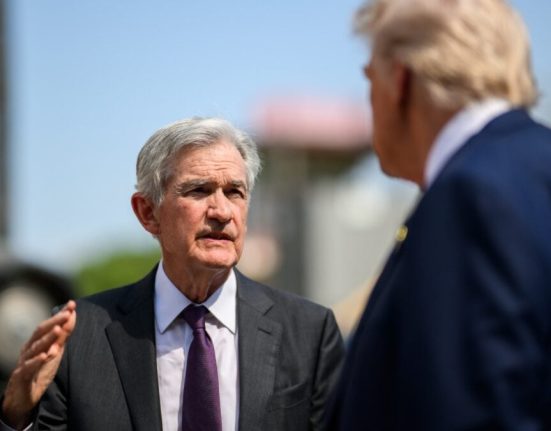The US crypto market has undergone a dramatic transformation in 2025. Once marked by regulatory hostility and enforcement-first approaches, the current environment under President Donald Trump’s second administration has taken a sharply different turn, one that signals an opportunity for crypto builders, investors, and institutions alike.
Since Trump’s inauguration on January 20, the administration has issued pro-crypto executive orders, reshaped agency leadership, and signaled an intent to regulate digital assets through a more innovation-friendly framework. For the first time in years, the US government appears poised to embrace crypto rather than restrict it, and that’s already starting to reshape how the industry operates.
A Shift in US Crypto Stance
A clear shift in regulatory posture emerged when the SEC paused its civil lawsuit againstBinance on February 13. The regulator cited the newly formed Crypto Task Force as a reason for the delay, signaling a broader reconsideration of how the agency engages with digital asset firms. Just weeks later, on March 25, Ripple Labs settled its case with the SEC for $50 million, less than half the originally imposed fine. Ripple admitted no wrongdoing, and the SEC dropped its appeal of a key ruling that XRP is not a security when traded on public exchanges.
Many of these changes are due to the Trump administration’s acknowledgement of the crypto industry’s desire for regulatory clarity. In a recent fireside chat at the DC Blockchain Summit, Binance CEO Richard Teng commented on the evolution of crypto regulation, “When you think about rules and regulations … in 2017 it was a totally different narrative. The regulators were not paying attention, the institutions were not embracing this, the rules were nascent at best. We operated in a very different landscape at that time. I think what’s important for financial institutions — and I think financial institutions trip over all of the time — is that we learned from those past mistakes. We acknowledge them, we made heavy investments in them, and we correct them to try to institutionalize the firm and to ensure its function. We have done all this. We’ve now made huge investments into our compliance functions.”
Teng continued by commenting on Binance’s commitment to compliance, “It’s close to 25% of our global staff. It’s a very key commitment and investment. Binance is the most regulated company, operating in 22 different jurisdictions.”
The broader policy transformation began almost immediately after President Trump took office. On January 23, he signed an executive order declaring digital assets a national priority. The order emphasized permissionless blockchains, self-custody, and dollar-backed stablecoins while banning any federal work on central bank digital currencies (CBDCs). It also called for regulatory clarity, streamlined oversight, and public engagement.
In early March, Trump went further by establishing a Strategic Bitcoin Reserve and a US Digital Asset Stockpile, both seeded with crypto assets seized in criminal proceedings. The Treasury Department will oversee both, with BTC held as a long-term store of value and other digital assets managed for strategic purposes. The move affirms crypto’s emerging role as a national asset class, not just a speculative vehicle.
To support this new direction, the administration launched the President’s Working Group on Digital Asset Markets, chaired by Special Advisor for AI and Crypto David Sacks. The interagency group has a mid-year deadline to propose a comprehensive federal framework for digital assets. With figures like Sacks involved, the group is widely expected to lean pro-innovation.
Scroll to Continue
Major personnel shifts have reinforced this pivot. Trump nominated former SEC Commissioner Paul Atkins, a longtime advocate for lighter-touch crypto regulation, to replace Gary Gensler as SEC Chair. Until Atkins is confirmed, Acting Chair Mark Uyeda, also known for his pro-crypto views, has begun dismantling the SEC’s enforcement-heavy approach. Uyeda formed a dedicated Crypto Task Force to reassess the agency’s policies and has deprioritized several high-profile cases.
Legislative efforts are gaining momentum as well. In February, lawmakers introduced updated versions of the STABLE Act and the GENIUS Act, both aimed at creating a comprehensive framework for fiat-backed digital tokens. The bills clarify reserve requirements, define eligible issuers, and assign oversight responsibilities. With bipartisan backing and crypto-friendly leadership in Congress, stablecoin legislation is likely to be the first major digital asset bill passed this year.
Together, these developments send a clear message: crypto is no longer an adversary of the US regulatory system. In 2025, it’s being actively integrated into the nation’s financial and strategic infrastructure.
What’s the Outlook for US Crypto Policy for the Rest of 2025?
Looking ahead, the outlook for US crypto policy in 2025 is cautiously optimistic. If the current pace holds, the United States could finally see clear federal legislation that defines how digital assets are treated across the board, from stablecoins and spot markets to securities classification and DeFi compliance.
The most likely near-term win is stablecoin legislation. Both the GENIUS and STABLE Acts include provisions that would create consistent reserve standards and federal oversight for major stablecoin issuers while allowing smaller players to continue operating under state regimes. This dual-structure approach appeals to both federal and state regulators, improving its chances of becoming law.
Meanwhile, broader crypto market structure legislation, such as a revised version of the Financial Innovation and Technology Act (FIT21), could take longer to pass. These bills aim to delineate the regulatory roles of the SEC and Commodity Futures Trading Commission (CFTC), but their scope and complexity may delay consensus. Still, momentum is growing: the current Congress is the most crypto-friendly in history, with strong bipartisan support and leadership from figures like French Hill and Kirsten Gillibrand.
The SEC’s evolving stance will be critical. If Paul Atkins is confirmed as Chair, the agency is likely to continue deprioritizing enforcement and instead focus on providing registration paths and relief mechanisms for token issuers. Uyeda’s Crypto Task Force has already signaled a willingness to revise guidance documents and reassess how memecoins, payment coins, and utility tokens are classified under securities law.
That said, enforcement will not disappear entirely. Agencies like the Office of Foreign Assets Control (OFAC) are expected to remain vigilant, particularly around sanctions evasion involving stablecoins. The Treasury Department may seek new authorities from Congress to act against bad actors in this space, even as broader policy becomes more favorable to the industry.
One wildcard is time. The Republican majority in Congress is slim, and the window to pass major legislation could close by early 2026 as campaigning ramps up for the next midterm elections. That makes 2025 a crucial year, perhaps the most pivotal to date, for shaping long-term crypto policy in the US.
Even with these uncertainties, the trajectory is clear. The US is no longer treating crypto as a fringe sector. Under the Trump administration, it’s being positioned as a strategic asset class and a pillar of digital-age economic leadership. Whether through legislation, executive orders, or regulatory recalibration, 2025 is likely to set the tone for crypto’s role in the US for years to come.








